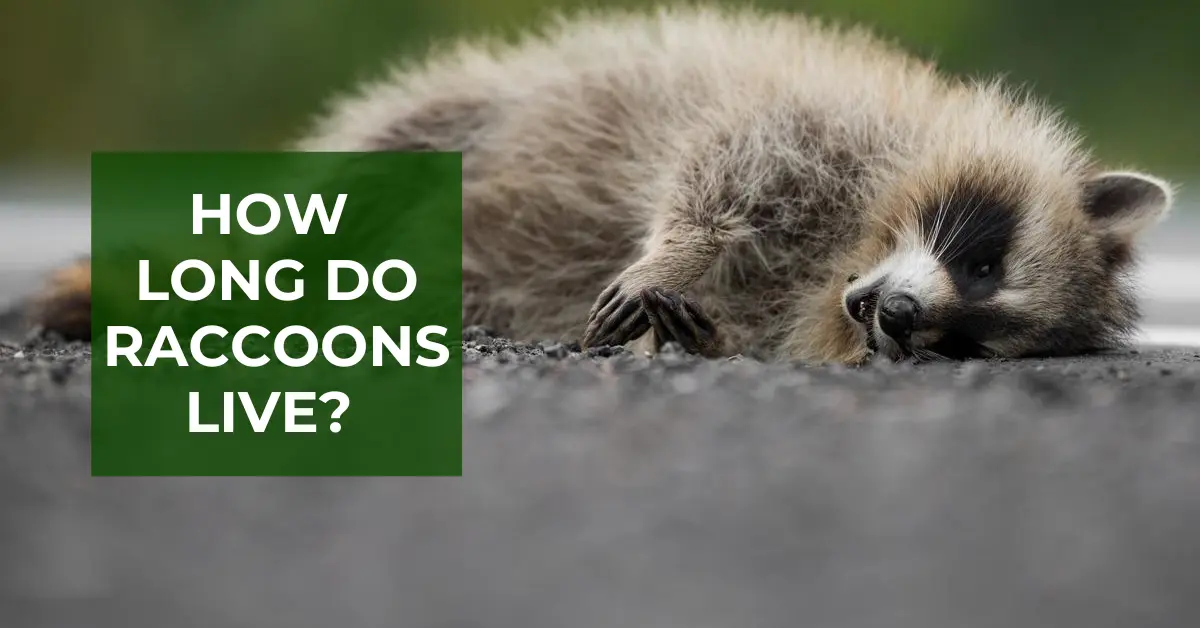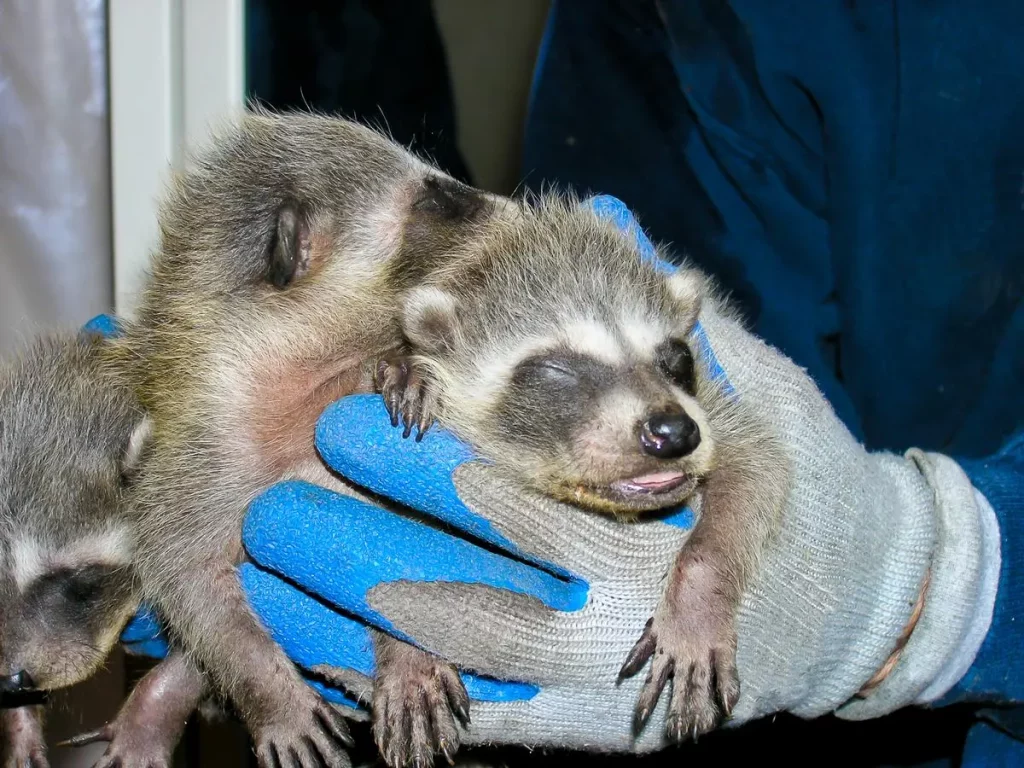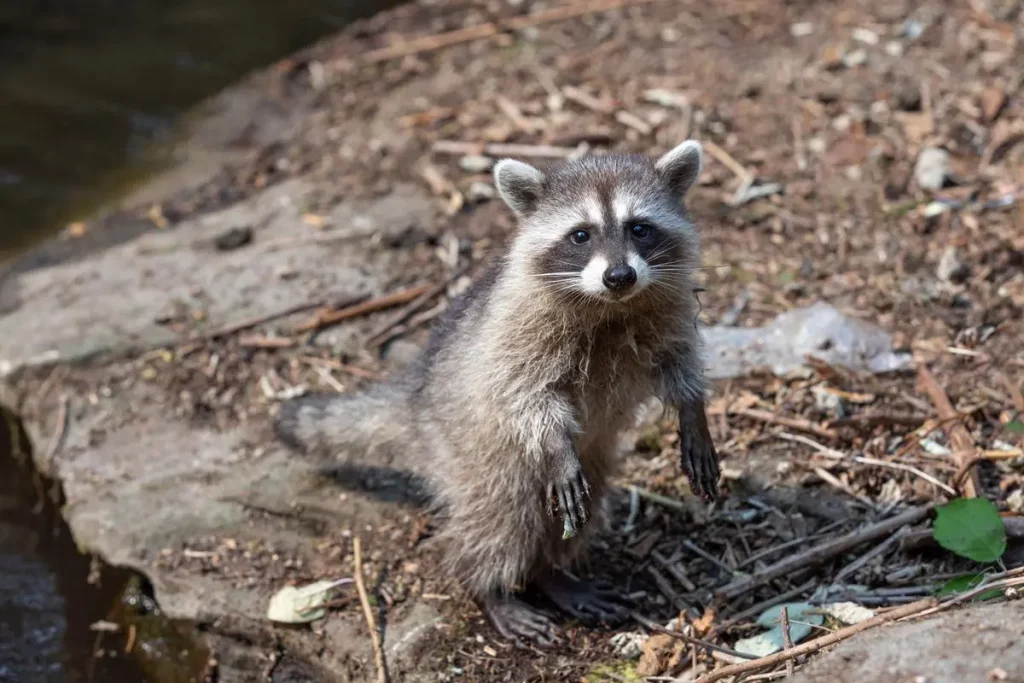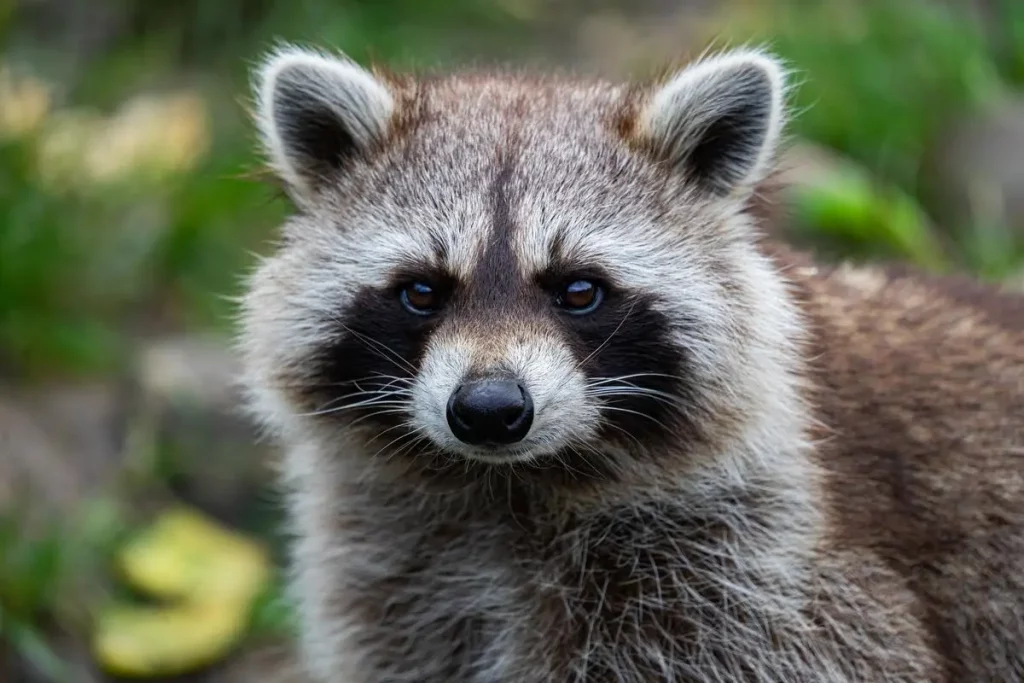How Long Do Raccoons Live? See The Average Lifespan Of A Raccoon

One of the characteristics of a living thing is death, which means every animal has a lifespan. Raccoons are animals that are loved and hated, but no matter what mind you have towards these creatures, we are answering your question: how long do raccoons live? Raccoons have fascinating lifestyles and habits you will love to read about.
Raccoons are expected to live an average of 2 – 5 years in the wild, and captive raccoons are expected to live much longer. For instance, a raccoon named Merlin was said to have lived for at least 14 years! That’s huge for such a specie of raccoon.
Some raccoons have also lived for about 20 years of age. Some conditions can contribute to how long raccoons live; we will check some of them in this article.
Raccoons face different predators and threats in the wildlife community, most of which are from humans. Raccoons are faced with early deaths due to cars and other human interference. They also face predation from large predators like coyotes and bobcats.
These mammalians can adapt to thrive in various environments, like forest areas and urban cities. They often plague campsites and other semi-rural areas by digging through trash cans and not minding if it belongs to humans.
Also, they use their deft hands to open various wide things and can run for about 15 miles per hour! With all this knowledge, let us check the lifecycles of Raccoons from newborns to young and to adulthood.
Contents
The Average Raccoon Life Cycle
Every animal has a lifecycle, which is why they will start from newborns to young or juveniles, then to adults, and raccoons also have the same lifecycle, so let us check together the lifecycles from when they are newborns to when they become adults.
Newborn Raccoons

For a newborn raccoon to emerge, adult raccoons mate in the late winter and early spring. Female raccoons only give birth once a year.
They have a gestation period that lasts about two months, and most raccoons give birth to about 3-6 babies. The newborn raccoons are always born blind, without hair, and helpless, but their mother plays a crucial role in their survival.
The baby raccoons are also known as kits; they get to start to walk after about three to four weeks of their life. Newborn raccoons are always in danger during this time, as coyotes and other predators can carry them off. This is because of their small size and the fact that they are relatively helpless.
Young Raccoons

When baby raccoons grow, they experience different changes but always remain with their mothers. Their life with their mother is about 6-8 months, and most times, it can be for the full first year of their life.
This time is detrimental to the young raccoons as they learn valuable foraging techniques and how best to hide when predators come.
Once the raccoons become a year old, they tend to live alone. Interestingly, the male reaches sexual maturity after two years, and the young female raccoons only need a year to reach sexual maturity age.
Also, the young raccoons learn how best to forage and procure more food for themselves in this stage of their lives. They are seen as opportunistic omnivores.
Adult Raccoons

Adult raccoons are considered fully grown after they are two years of age. Many of the raccoons weigh about 5 pounds to more than 20 pounds, and that depends on their size and food availability. Are you aware raccoons ensure they wash their food before eating it, just like people do?
Unfortunately, most adult raccoons are close to the end of their lives based on their lifespan while in the wild. With the diverse environmental and health issues, an adult raccoon may live past 2 to 3 years in their lifetime.
Factors That Affect The Lifespan Of A Raccoon
A raccoon’s long life is affected by factors like humans, predators, diseases, and climate change.
Human
Human beings significantly impact the lifespan of raccoons through hunting and habitat loss. As some cities get developed, some of the habitats of these creatures become space for homes, roads, etc., for humans.
When this happens, this will drive away the raccoons and make them void of habitat. By not having a place to live, they are exposed to diverse conditions.
In some urban areas, some raccoons are seen as pests. They consider them as this because they always raid garbage cans and make dens for themselves in their homes. This increases the targets humans have on them, and the raccoons can be hurt while getting rid of them.
In addition, because some highways in big cities are always busy, it turns raccoons into nocturnal animals. They know they are only safe to get food at night.
Predators
An adult raccoon can have some predators beyond human beings and other mammals. The common mammals are wolves or coyotes, always found in the woods where raccoons’ dens are. Hawks, bobcats, owls, etc., can attack them. These attacks from animals and humans can shorten their lifespans.
Disease
Distemper is one of the commonest diseases that can terminate the life of raccoons. This disease always attacks their respiratory, gastrointestinal, and nervous system. The viral infection can cause paralysis or make them starve because they would not be able to find food on their own.
They are also affected by some bacterial diseases like leptospirosis, tularemia, Q fever, yersiniosis, and pasteurellosis, and they can also reduce their life spans.
Furthermore, they have parasitic attacks, such as Baylisascarisprocyonis, also called Raccoon Roundworm. Giardia infection can also affect their health. Other parasitic conditions are mange mites, trichinosis, fleas, and ticks along the ear mites.
Climate change
As much as Raccoons have an adaptation that helps them survive during winter, a long and extreme cold affects them greatly. As you know, raccoons are not true hibernators and still need to scout for food during this season. This season poses a lot of threat to them because they are always the coldest months.
How Long Do Raccoons Live In The Wild?
Raccoons’ average lifespan depends on whether they are wild or in captivity. When a raccoon is in the wild, they have very short lives to live; most young raccoons die before they reach their sexual maturity age which is always a year.
However, if they are opportune to make it past that first year, then their chances of dying will reduce significantly. So, wild raccoons have the opportunity to live about three to five years on average but can still live up to 16 years.
Why Do Raccoons Only Live 2 to 3 Years In The Wild?
The average lifespan of a raccoon in the wild is about five years, but when there is a surplus of food and habitat, they can live for a decade. This means when there is little food and shelter, Raccoons will only for 2 to 3 years or even lesser.
It has been said that about 50% of raccoons die in their first year of living. These deaths are caused by human beings, predators, diseases, starvation, and even climate and weather, which were discussed extensively above.
How long do Raccoons live is subject to many conditions, but it is still great that these creatures can live for about 2 to 3 years.
The lifecycle for each stage of their lives also shows that they are amazing creatures, if not for the diseases they can transmit to people. Also, the damage they cause to gardens, garbage cans, and raccoons would have been seen as pets.




